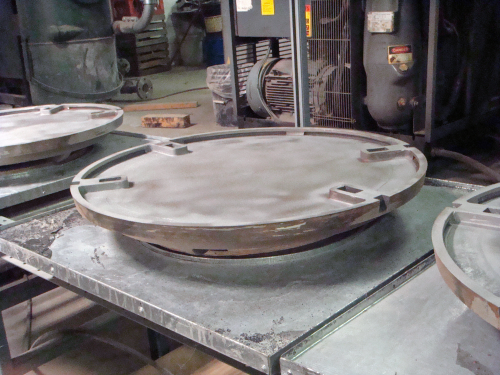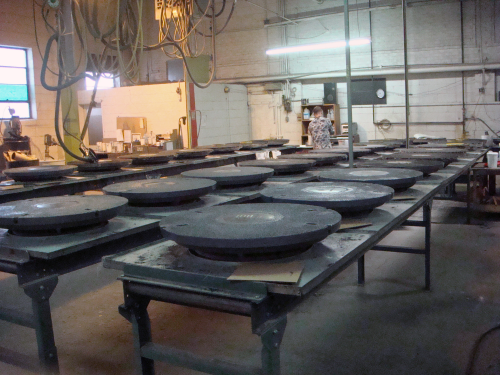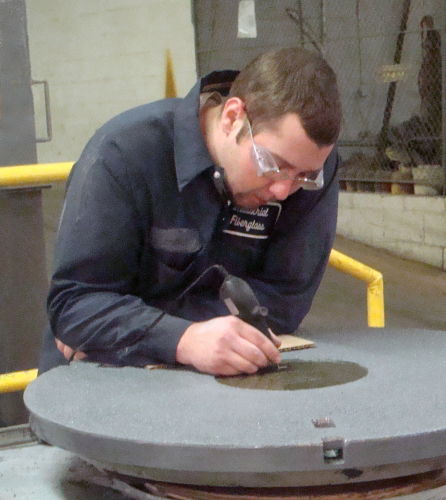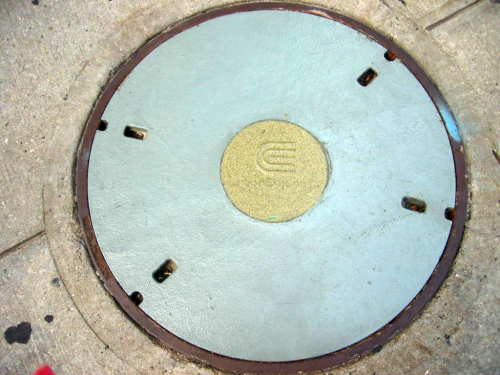



In addition to making the surface safer to touch, the composite layer made with AOC’s Vipel® vinyl ester resin makes the overall cover stronger. AOC’s vinyl ester is engineered for resilience and resistance to heat, steam and corrosion. The resin was reinforced with layers of Vipel resin-impregnated glass fibre, and a skid-resistant coating was applied to the top of the cover.
“Engineers looked at cast iron with conventional insulation, but this did not provide enough reduction of heat transfer,” says Ted Morton, President at IFS of Dayton, Ohio, USA. “The composite layer of the hybrid cover meets the need to reduce heat transfer. In addition to protecting against burns, the non-metallic composite layer is a deterrent to scrap metal thieves.”
The 0.25 in (6.4 mm) thick composite laminate adds 35 lb (15.8 kg) to the 255 lb (115.7 kg) cast iron dish for a final hybrid cover weight of 290 lb (131.5 kg). The hybrid FRP manhole cover is 31.2 in (79.2 cm) in diameter.
Testing showed the steel and composite hybrid manhole covers can handle traffic loads up 100,000 lb (45.4 tonnes). The American Association of State Highway and Transportation Officials (AASHTO) traffic standard specification is 25,000 lb (11.3 tonnes).
“Future versions of the cover under development will be based entirely on FRP,” Morton says. “These all-FRP covers will be lighter weight, meet AASHTO requirements, and have even greater thermal insulating properties to protect people and animals from serious harm.”






